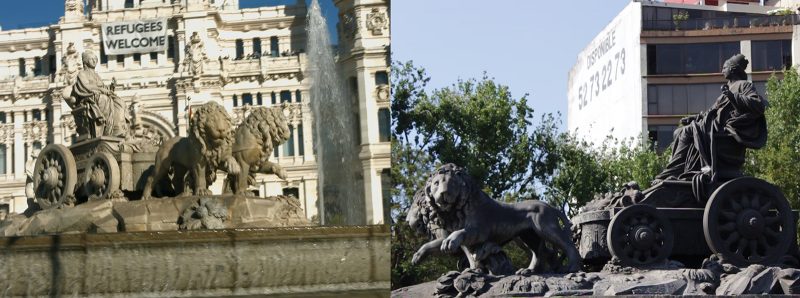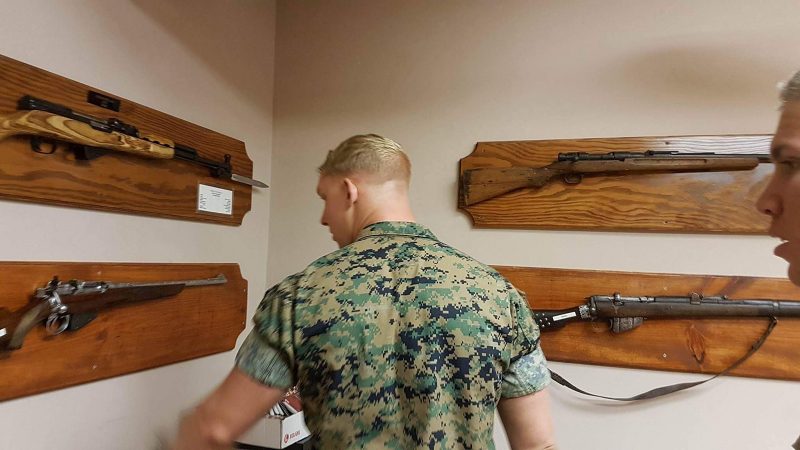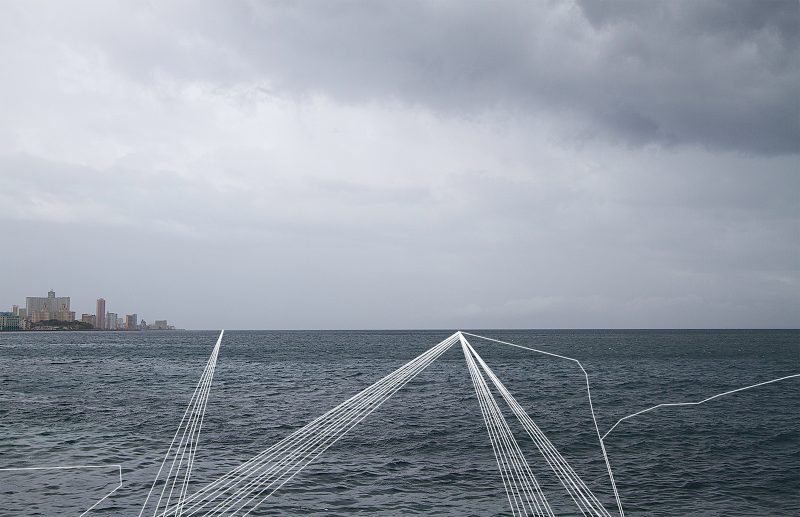“The sea flows, evaporates, precipitates, surges and retracts in waves—like citizenship, like intimacy, like borders.”
– Gravy Studio + Gallery
How Wide is the Gulf?, featuring the work of photographers Gonzalo Reyes Rodríguez, Jezabeth Roca Gonzalez, and Brooke White, is presented by the Gravy Studio + Gallery in Northern Liberties in tandem with this year’s Society for Photographic Education 55th Annual Conference, the theme of which is “Uncertain Times: Borders, Refuge, Community, Nationhood.” Rebekah Flake has curated the show by bringing together three artists who are interested in the divides between people, between nations, between generations.
The Cibeles fountain
Gonzalo Reyes Rodríguez is a professor in the Department of Art and Architecture at City Colleges of Chicago. His “Objective Confess” (2016) is a short, multi-channel video on two monitors, one which focuses on the Cibeles fountain in Madrid, and the other which focuses on a replica of that fountain in Mexico City. Each video presents the fountain and the flow of life surrounding it. By contrasting the two fountains, which were built over a century apart, the artist brilliantly captures the historical, developmental, cultural and economic differences between the two countries. At the same time, the fountains, which feature Cybele, the Roman goddess of fertility, become a symbol of the brother/sister-hood between Spain and Mexico. It really is quite remarkable simultaneously to witness the two intimately related environments, which exist a world and ages apart.

The gulf between Puerto Rico and the mainland
The work of Jezabeth Roca Gonzalez, who is currently an M.F.A. student at the University of South Florida, focuses on the gulf between Puerto Rico and the mainland of the United States. In one short video, “Voicemails November 2017,” the artist uses voicemail as a vehicle to dramatize the painful communication blackout that occurred in the aftermath of the hurricanes which ravaged Puerto Rico in September of 2017 — weeks during which it was not possible to determine whether friends and family on the island had survived. In another video, “Nothing Special, Elements of Being,” a lovely dance in which two women gracefully, intimately and playfully move together, almost as one, Roca Gonzalez portrays the flip side of the severed connections she spotlights in “Voicemails.”
In another piece, this one a series of eighteen small photos, titled “Gringolandia,” Roca Gonzalez uses images created by her brother which document his experience as a marine stationed at Camp Pendleton, in Southern California, to explore Puerto Rican machismo as it is manifested as an expression of American citizenship. By reminding us that America’s armed forces include many individuals otherwise marginalized in our society, Roca Gonzalez highlights the hypocrisy of those who lavish boundless praise upon our troops while brazenly perpetuating the myths and prejudices that marginalize so many of them.

Cuba
How Wide is the Gulf? includes a selection of Brooke White’s abstracted panoramas from Cuba, which, with the addition of line drawing, literally delineate migration channels across the Gulf between Cuba and the United States, oftentimes by raft. White, who teaches at the University of Mississippi, portrays that migration as it historically has been diverted by political winds. Indeed, there was a moment, not long ago, when it seemed as if those winds had abated, and that the distant Havana portrayed in White’s photographs seemed almost within reach. In our current political environment, of course, where too many seem to feel that the gulf cannot be wide enough, the hopes of some for connection and reconciliation with Cuba have been dashed.

How Wide is the Gulf? is a timely exhibition that rewards the viewer’s contemplation with a sense of what might have been — of what might be in a world in which connection triumphs over disconnection, in which xenophilia triumphs over xenophobia. A flag on one of the palaces that surrounds the Cibeles fountain in Madrid reads “Refugees Welcome.” If only that was universally true.
How Wide is the Gulf? will be on display at the Gravy Studio + Gallery through March 13th.









